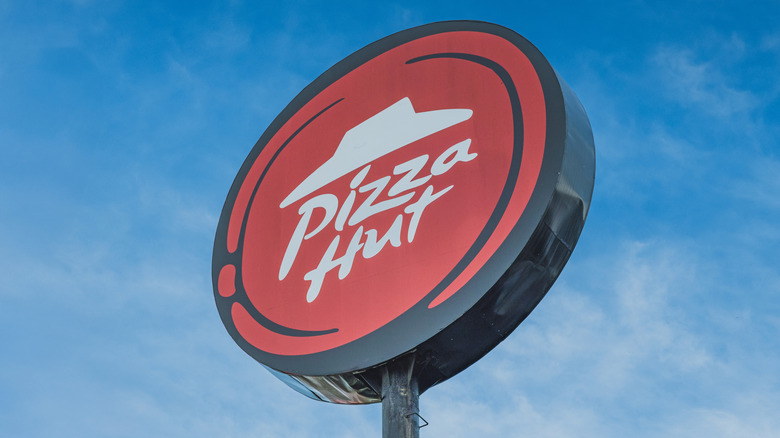How America Changed The Way We Think About Pizza
One of the little-known facts about pizza is that it's been classic Italian fare for centuries, but Americans have certainly taken the concept and run with it. So how exactly did stateside cooks change the way we think about this dish? The United States saw an influx of Italian immigrants bring their cultural traditions with them throughout the late 19th century and early 20th century, including pizza alla casalinga, or housewife-style pizza. It was a humble variation of the pies we know and love today, often made in a rectangular shape with olive oil, fresh mozzarella, crushed tomatoes, and herbs like basil and oregano. It remained largely an at-home food until the late 19th century, when quasi-official pizzerias began popping up (one of the first genuinely-licensed NYC spots, Lombardi's, started selling pizza in 1905).
Shops selling the Italian cuisine began to appear all over the East Coast and, as Italian immigrants and their descendants continued to migrate west, the dish became more popular throughout the U.S., especially after the introduction of pizza by the slice that let folks enjoy it on the go. By 1935, San Francisco got a pizzeria with the opening of Tommaso's and Chicagoans began experience the deep dish pizza phenomenon when Uno's opened in 1943 (though other pizzerias opened in the Windy City as early as the 1920s).
With the invention of the gas-fired pizza oven in 1945, pizza-making became faster and cheaper. That allowed many businesses to expand, but sometimes at a steep cost. While the ability to make pizza quickly and for less money helped popularize the dish, it also contributed to the downfall of many of the mom-and-pop spots that started it all.
Chain restaurants changed the pizza landscape
With the advent of the gas-fired pizza oven, pizzerias began sprouting up all over the country during the late 1940s into the 1950s. Yet, by the 1960s, the widespread success of independently-owned pizza joints came to a standstill. Entrepreneurs who had witnessed the rise in popularity of pizza were inspired to make their own, not necessarily out of love for the cuisine but because it was an opportunity to make some serious cash. Pizza Hut was the first national chain to kick off what would become a battle of the brands in 1958, followed soon by Little Caesars in 1959 and Domino's in 1960. They streamlined the art of pizza-making and made it available to customers for cheaper than ever, pushing the mom-and-pop taverns that inspired them against the ropes.
As these new pizza chains grew, independent pizzerias started to fall off the map. The chains had revolutionized the industry and made pizza more beloved than ever, yet the mom-and-pop taverns that inspired them couldn't compete with the chains' low prices. Still, some independent pizza shops continue to thrive with patrons who want a higher-quality pie. They might be hard to spot with all the Papa John's and Old Chicago chains in your locale, but they are still there if you look hard enough.

